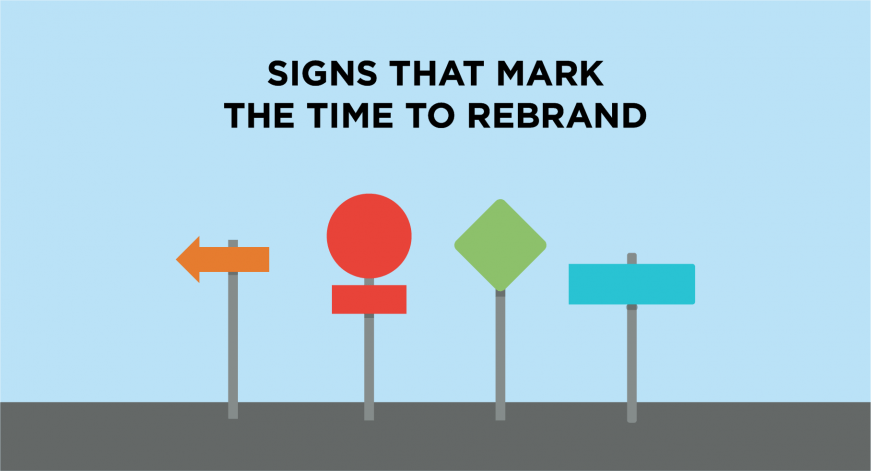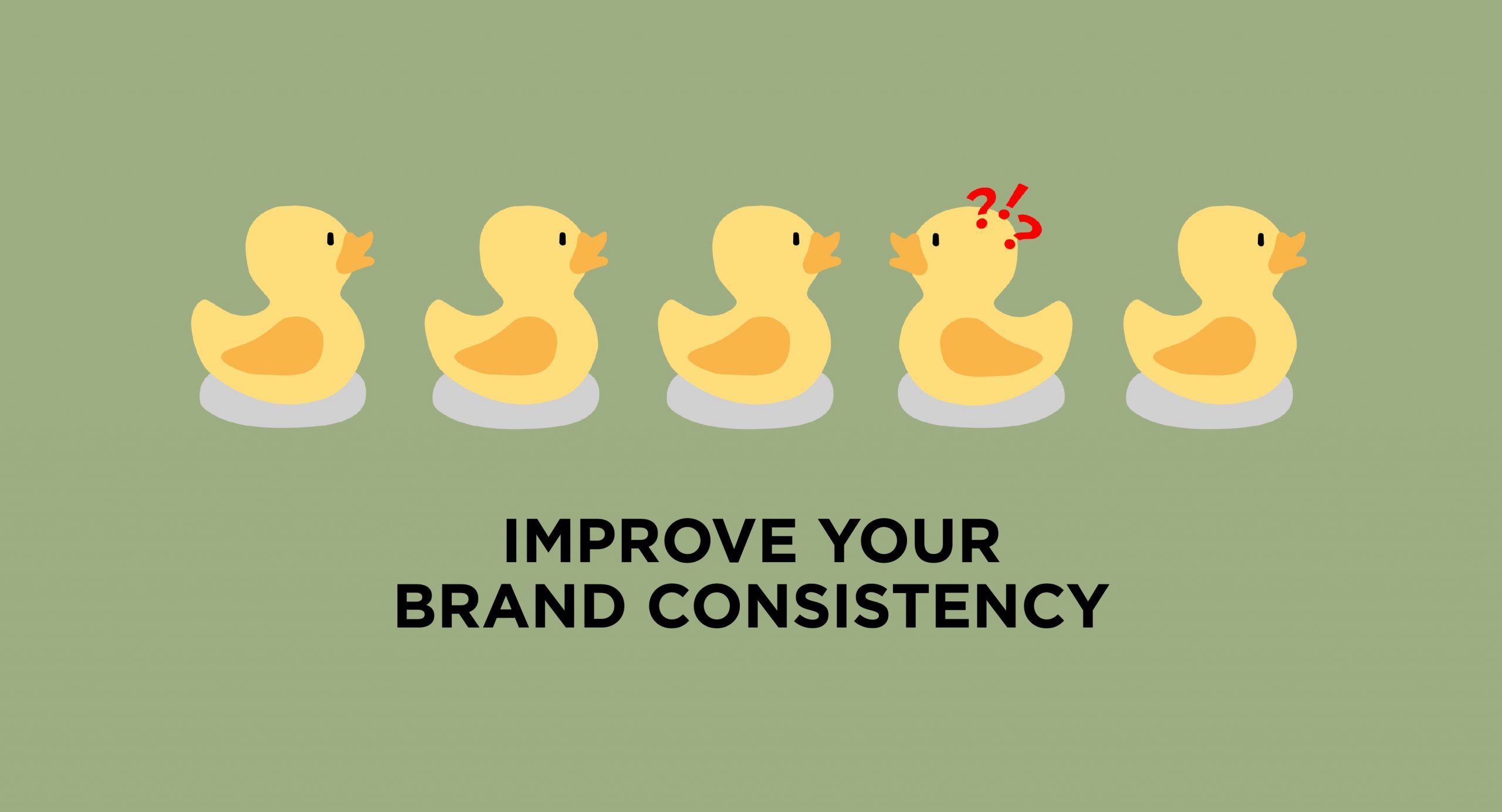BRANDING | POSTED ON 10.08.2020
Is it the right time to rebrand? | The signs to look for
No matter how iconic the brand, there always comes the point when you need to rebrand. Milestones can be a good opportunity to rebrand your business. However, there is no benefit to rebranding every year. Here are a few of the main signs that indicate you might want to plan a rebranding campaign as well as everything you need to know about rebranding.
What does rebranding involve?
The aim of rebranding is to change the image of your company. The main goal is to create a new identity that makes your brand stand out and resonate with your customers. Achieving this can be done in a number of different ways.
If you are making a big change and pivoting your company, then you might want to consider a new name. This can be helpful if you are trying to show that your brand has evolved, attract a new audience or reflect a more contemporary feel. Changing your name doesn’t mean you have to give up all the brand recognition you already have. However, it is something that should be done with care and consideration.
A less drastic change you can take when doing a rebrand is to change your logos and slogans. Again you can do this as minimally or radically as you desire. A small change, like picking a different font, can make a subtle difference to your image. For example, changing from a handwritten font to a serif font can be all it takes to shift your brand from an informal one to a trustworthy one.
Your style guidelines for all of your communication will need to be considered as well, during a rebrand. You may need to find a new voice to match the new image of your company. This is especially true if you are aiming to reconnect with your customers.
In order to know the scope and detail of your rebranding changes, you will need to do a lot of research and analysis. It may involve talking to your customers, doing a survey and talking to your employees. You need to really understand your internal and external brand – your industry, competitors, audience, values, personality, positioning, message as well as a clear direction and goal. You need to identify what you are trying to achieve. Also, think about exactly who you are, who you are trying to connect with and their perceptions and needs.
Finally, you need to consider your marketing, social media, website and how all the aspects of your new brand will work together to communicate your unique brand story and resonate with your ideal audience.
How often should I rebrand my business?
On average, a business rebrands somewhere between every 7 and 10 years. You can’t expect styling and communication trends to last any longer. Beyond that time, the world will have moved on significantly, and your brand will start to look stale. This is true even for brands that are aiming to look traditional or classic.
There are situations when you should rebrand in a shorter time frame. If you make a big change to your company, it can be necessary to rebrand sooner than you planned.
There is no fixed schedule for rebranding. Ideally, it should be as a reaction to the market and to your customer.
Your brand style and visual identity is outdated
As mentioned styles change. What looks fresh and modern now will look dated in 10 years. Sometimes it doesn’t even take that long for styles to shift dramatically. Even if on the surface, your branding fits with current trends, it can feel stale to your customers.
With just a little bit of market research, you can find out how people perceive your company. It can be worth undertaking this every now and then to identify when the mood is starting to shift. This can signal that it’s time to begin thinking about a rebrand to give your company an updated look and feel.
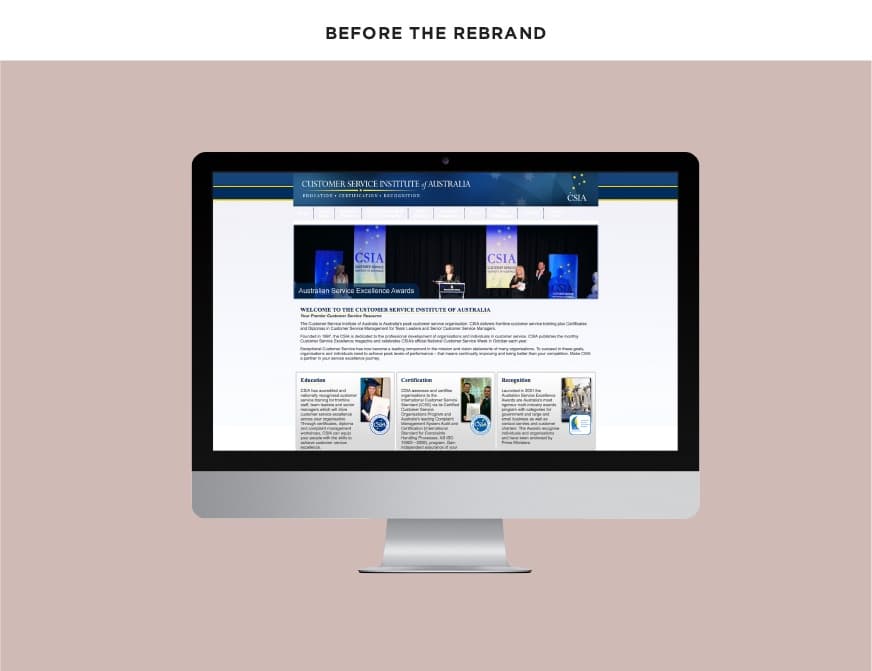
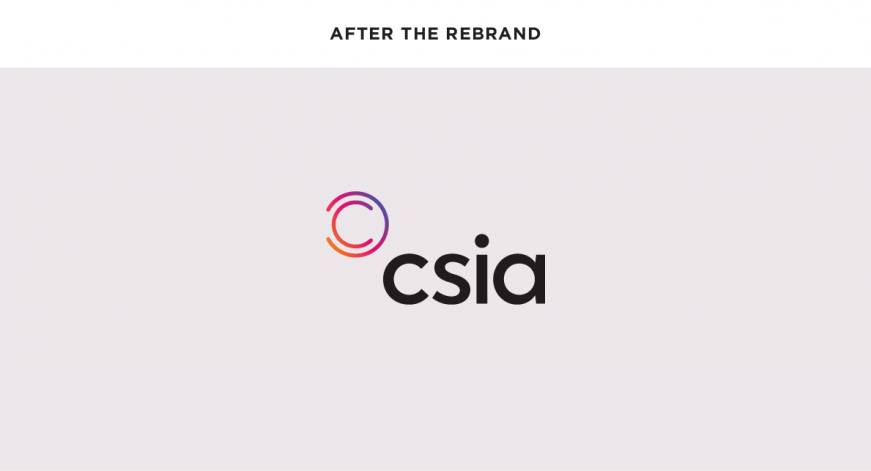
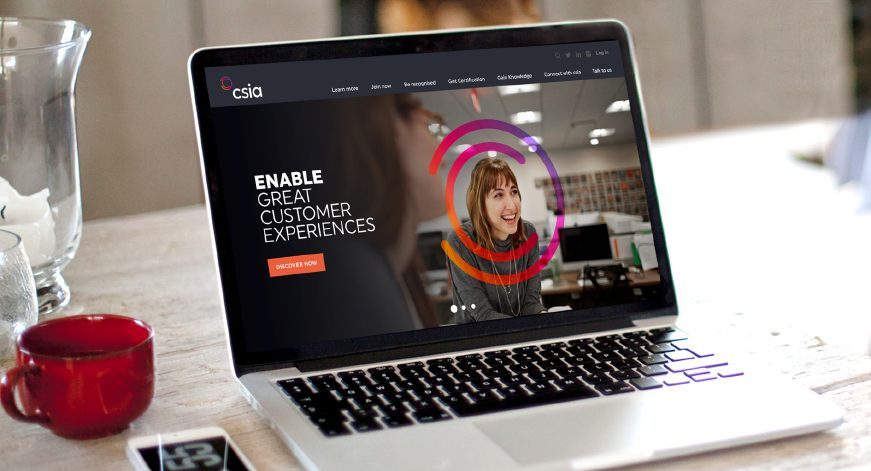

View the full rebranding case study for CSIA
Customer preferences have changed
The most important consideration when designing and communicating your brand, is what appeals to your customers. Your brand will be targeting a very specific group of people. Your brand needs to keep up with their preferences, regardless of what else is going on in the world.
Solicit feedback from your customers about their preferences and check to see how well you align with their desires and needs. If you’re sliding further away from their ideal image, then it’s time to put yourself back in their field of vision.
When the only thing that has changed is the preferences of your customers, you may be able to make minimal changes to reap large rewards.
The level of competition in the market increases
If your market place suddenly becomes filled with competitors, or a savvy new competitor enters the market, then you may no longer stand out or be as relevant to your audience. Your competitors may be appealing to your market in a clearer and more exciting way. They may be offering new technology, a new streamlined service or added value. You might find that you’re starting to lose market share.
Whenever the marketplace changes, you need to take steps to ensure that your brand maintains a unique identity that communicates to your audience. The more you understand and keep in touch with your audience, the more you can keep your brand relevant. Over time, the needs of your customers change so it’s important to keep up to date with what they want.
People’s needs change as other products and services enter the market and offer something unique or better. It’s no good looking like ‘a’ company in the sector. You need to look like the ‘the company for x, y & z’ in your sector. Understand what you stand for as a brand and communicate how you can help people. Rebranding helps a business connect with their customers to build stronger and longer term relationships.
You’ve lost control of the brand image
There are lots of ways your brand can signify something different than you intend it to. Your colour scheme might have been used in a prominent and viral video for something you don’t want to be associated with. Perhaps your brand has become the target of an hilarious but not complementary meme. Alternatively, it could be that your brand has just developed a less than favourable reputation over time.
Whatever the reason is that you’ve lost control of your brand, you need to try and take it back. Shifting your colours can be all it takes to distance yourself from another group or organisation.
In the case of a social media backlash, you have few options. You can try to have a sense of humour about the situation and move on gracefully. You can just try to weather the storm, and then quietly make some changes to your appearance. Just don’t try to fight it too hard, because that will just summon the trolls.
In the case of a bad reputation, you may need to do a whole overhaul and really look at what’s behind your bad reputation. If you just change your outward appearance but make no substantive changes, you’re quickly just going to end up back where you started.
Customers aren’t recognising your value proposition
Your brand does a lot of things for you. It should signal to your customer exactly what makes you different from your competition. If your customers are not able to easily discern what you are offering that goes above, and beyond your competition, then you have a problem.
Your brand should make your market position clear. You might personally favour a clean and simple brand style, but with the wrong choice of colour, for instance, yellow or orange, this might be signalling to your customers that you’re a youthful brand and tailored to a younger market. If this doesn’t align with your actual identity, then you’ll attract the wrong customers and the ones who find you, likely won’t stay.
Maybe the voice you are using for your communication also appeals to a younger market and doesn’t resonate with your more mature audience. Maybe the humour takes away from the seriousness or trust of the brand.
On the other hand, if your branding is in rich blues and purples and communicates the experience of the company, the quality materials and the detailed process, then your customers will likely view you as a premium option.
A preponderance of green, earthy tones and messages from a scientist and a blog with knowledgable and relevant topics, can be an indicator that you have a trusted, ecological or environmental aspect of your offer.
The colours you choose, the voice, images and depth of information can communicate so much about your company, so you need to really consider what the message is that you want your customers to hear. How do you want your brand perceived? How can your brand become aligned with the values of the business? Then look at your brand to identify how you can change it to send the message your customers are currently missing.
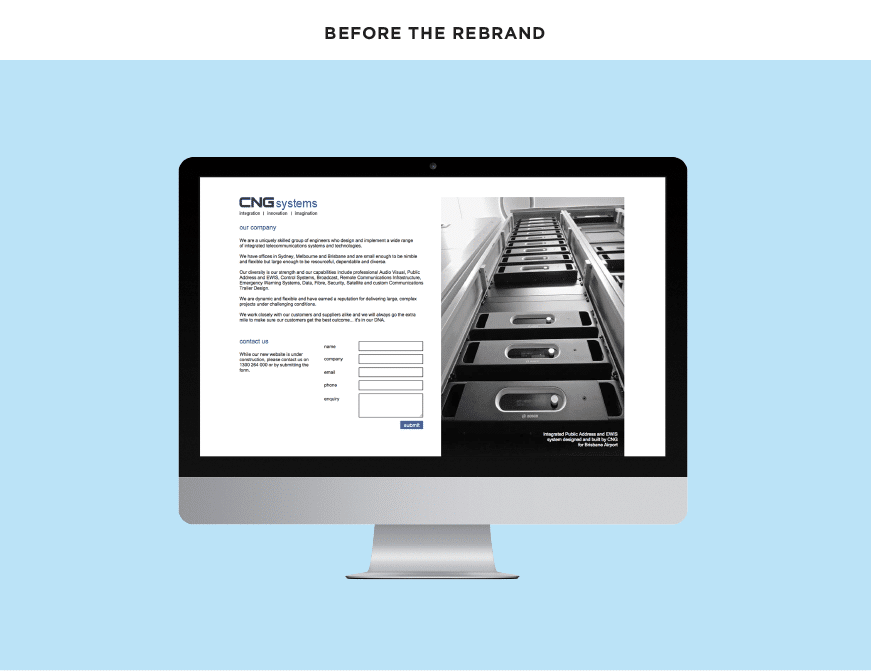
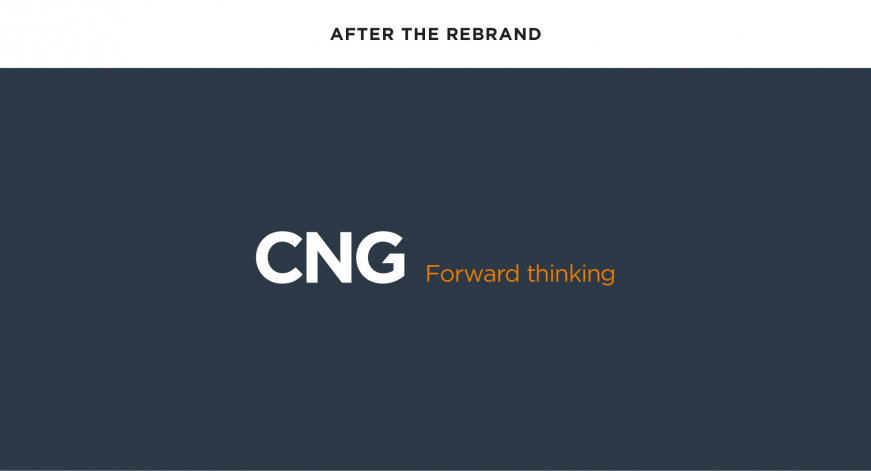

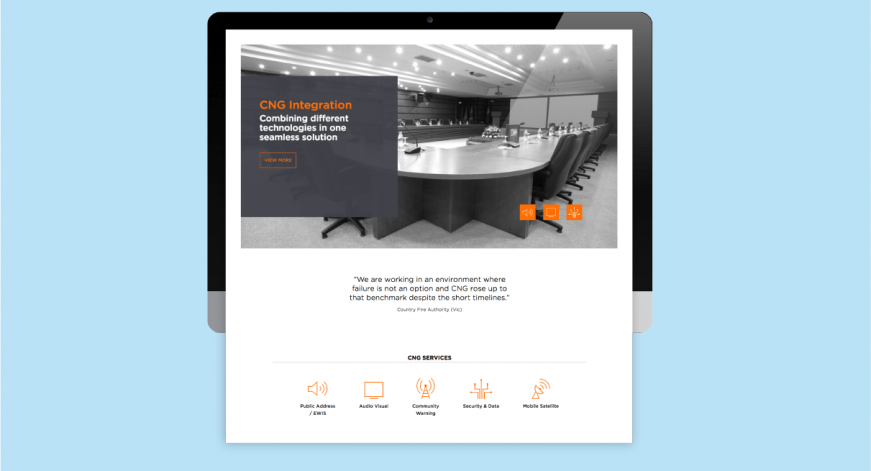
View the full rebranding case study for CNG
Innovation has changed the marketplace
New technology and ideas can have a drastic impact on your company. It could even threaten the very existence of your business. If this happens and your company pivots and evolves then your brand needs to do the same.
For instance, if your sector takes a step towards digitisation or virtualisation, then your old branding may not be communicating innovation or forward thinking ideas and technology. Logos and colours that work well printed on paper as letterheads may not read on a computer or mobile screen. You now need to think how your logo and brand will be represented online across your website and all the social media platforms and online marketing.
Understand where your customers are now searching for your product or service. Are potential customers or clients viewing your website? If they are, remember this is now your shopfront and customers quickly work out whether they want to buy from you or not. It is very easy for them to click off your site and try another supplier if you don’t hold their interest or communicate what they need. People often now do their research online before they purchase so it’s important that your brand is representing your business correctly.
If you know that change is coming, then you should be proactive with keeping your brand aligned with where your business is going. You can’t just hope that your current choices will work and remain relevant.
It’s better to get ahead of changes than have to deal with the fallout when you start losing relevancy and market share. Fixing things in a hurry is not an effective business strategy for any aspect of a business. So why would you take this approach to marketing?
Targeting a new segment or demographic
Your brand should be targeted very specifically at a type of customer and demographic. If you are changing your target, or it has become clear that your product is actually appealing to a completely different consumer than you thought then this is the time to rebrand.
If you are doing a complete shift of your target customer, then you will probably be best served by completely overhauling your brand. You can relaunch yourself aimed solely at this new demographic. After all, most 20-25-year-olds aren’t going to be interested in the same things as grandparents and retired individuals.
If you are expanding your target audience, then this will need to be done with more care. When rebranding in order to add new demographics, you want to avoid alienating your existing customer base as you hunt for new customers.
That said, there will always be some push back and some negativity when you make a change. An initial negative reaction is not necessarily a bad thing. It can generate interest and drive more traffic. So, when you are making a change to expand your customer base, do be prepared for some push back from the existing customers.
You can cushion yourself against the pushback by planning for it. It helps to flag things you are doing for your existing customers as well as appealing to your new ones.
Entering a new market
Your brand is a representation of who you are and what you have to offer. It should be optimised for the marketplace you exist in. So, if you are looking to move into a new market, you will need to take a long hard look at how well your existing branding will work in this new marketplace.
There may be some features you can keep or adapt. It is unlikely though that you will be able to make a smooth and effective transition to a new market without undertaking at least some level of rebranding.
Another large consideration when entering a new market is that you will need to carve out a piece of the market. You need to make it clear that you fit into the niche you are moving into, and you will also need to make it clear how you stand out from the existing options. As the new proposition, your branding will need to be on point to attract attention and to move customers who have already made a decision.
Changing your business structure
Suppose you are going through a merger, acquisition or demerger then you may have to consider rebranding. There can be legal requirements associated with some of these situations which will necessitate a change in branding.
Rebranding when your company is going through a big change can be an important way to signal what is happening to the rest of the world. Done right, it can be used as a launchpad to grow and enhance your business.
If you are rebranding as a legal requirement, then you may want to find a way to thread some of your old identity through your new one. This can allow you to carry some of the positive reputation you have built with you into the new business structure.
Having a good understanding of why you need to rebrand can help you to do it effectively. Before you embark on rebranding your company I urge you to fully consider the reasons for your change and what you hope to achieve as a result. It is only with this mindset that you will be able to get the benefits of rebranding without stumbling into a rebranding fail. There are plenty of examples of companies who have got it wrong and had to deal with the consequences.
Related questions
How often can I change my brand’s Logo?
Your logo is an important piece of your brand. When you are doing a whole rebrand, then you may want to consider changing your logo at the same time.
If your logo has remained unchanged through a number of smaller rebranding efforts, then you may want to review it. You should check if your logo is still in harmony with the rest of your brand. It may no longer have the same feel or communicate the same message as the rest of your brand material. Maybe it is too busy and needs to be simplified or doesn’t adapt to different formats and social media platforms. There may be no consistency of the logo format across your marketing.
If your logo doesn’t read right, then you need to make a change. Your logo should serve as shorthand for who you are and what you do. If it isn’t effective in serving in this capacity, then it’s time to make a change.
Once you have an effective logo, you shouldn’t need to change it too often. Doing so can detract from your brand. You don’t want to give your customers whiplash. A logo should easily last for five years. If you find yourself wanting to change it more often than that, you need to consider why you want to change it so often. It takes time for audiences to remember your logo, so consistency is very important as you build up your reputation and trust. Considering the failings in your previous logos may help you to settle on a more long term and effective logo.
How should I announce a brand refresh to customers?
You should develop a clear timeline for all aspects of your rebranding. Before you tell your customers you need to make sure that you have communicated with your staff about the changes.
There is nothing worse than your staff being as surprised about a branding change as your customers. Empower your team to capitalise on the new branding by preparing them before you announce to your customers.
Once all your internal stakeholders are informed, and onboard with your rebrand, you can start to take your message out to your existing customers. It can be good to alert them to the upcoming change and let them know that they will still be able to receive the same service as before. Springing a new look on your customers can incite a flurry of questions and undue concern, so let them know it’s coming.
Once this is done, you can plan to take your new look to all your potential customers. A good way to do this is with a big sales event or offer. Combining the change in brand with something that will appeal to customers can instantly create a positive association.
When you do launch your new brand, don’t forget to use your social media marketing channels. And do be self-aware about your announcement. Go to market with your brand story, communicating why you decided to rebrand. You will develop more of a connection with your audience if you take them on the rebranding journey of why you have made the changes.
It may because you wanted to understand your audience better and through a survey, you realised that the needs of your audience had changed. Maybe your brand wasn’t reflecting your business any more. What ever the reason, your rebrand launch is a great opportunity to highlight how you have now met the needs of your audience.
